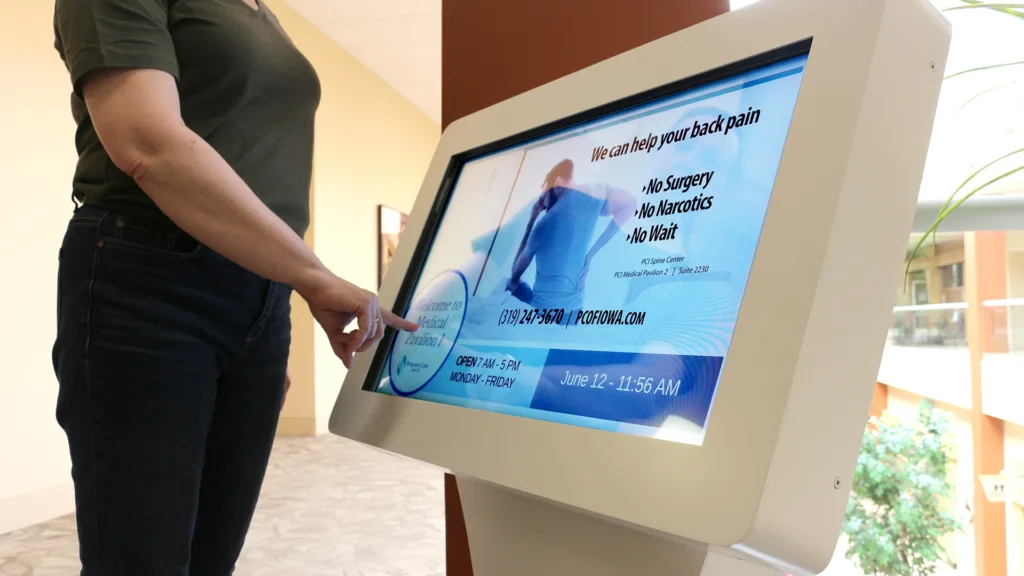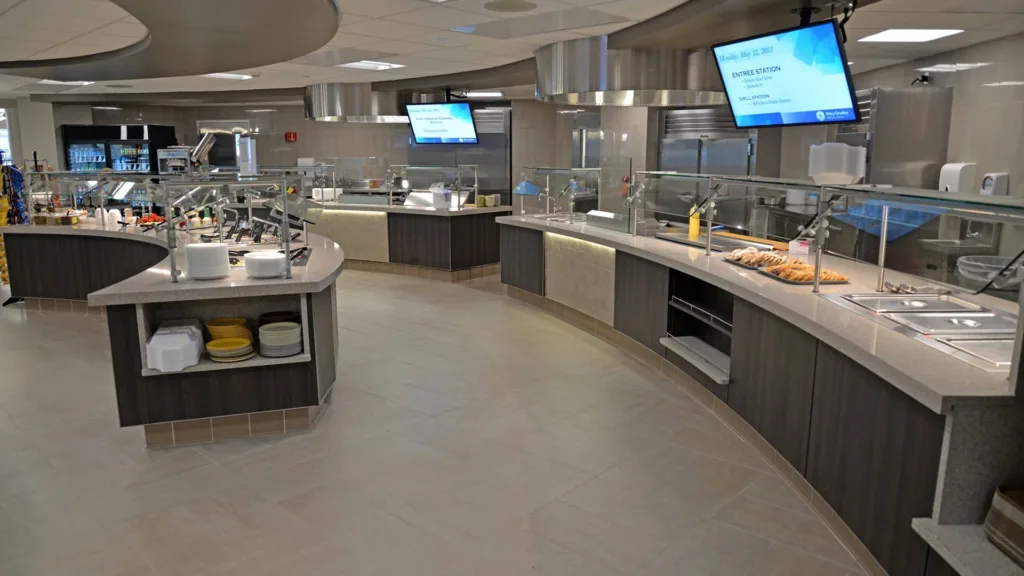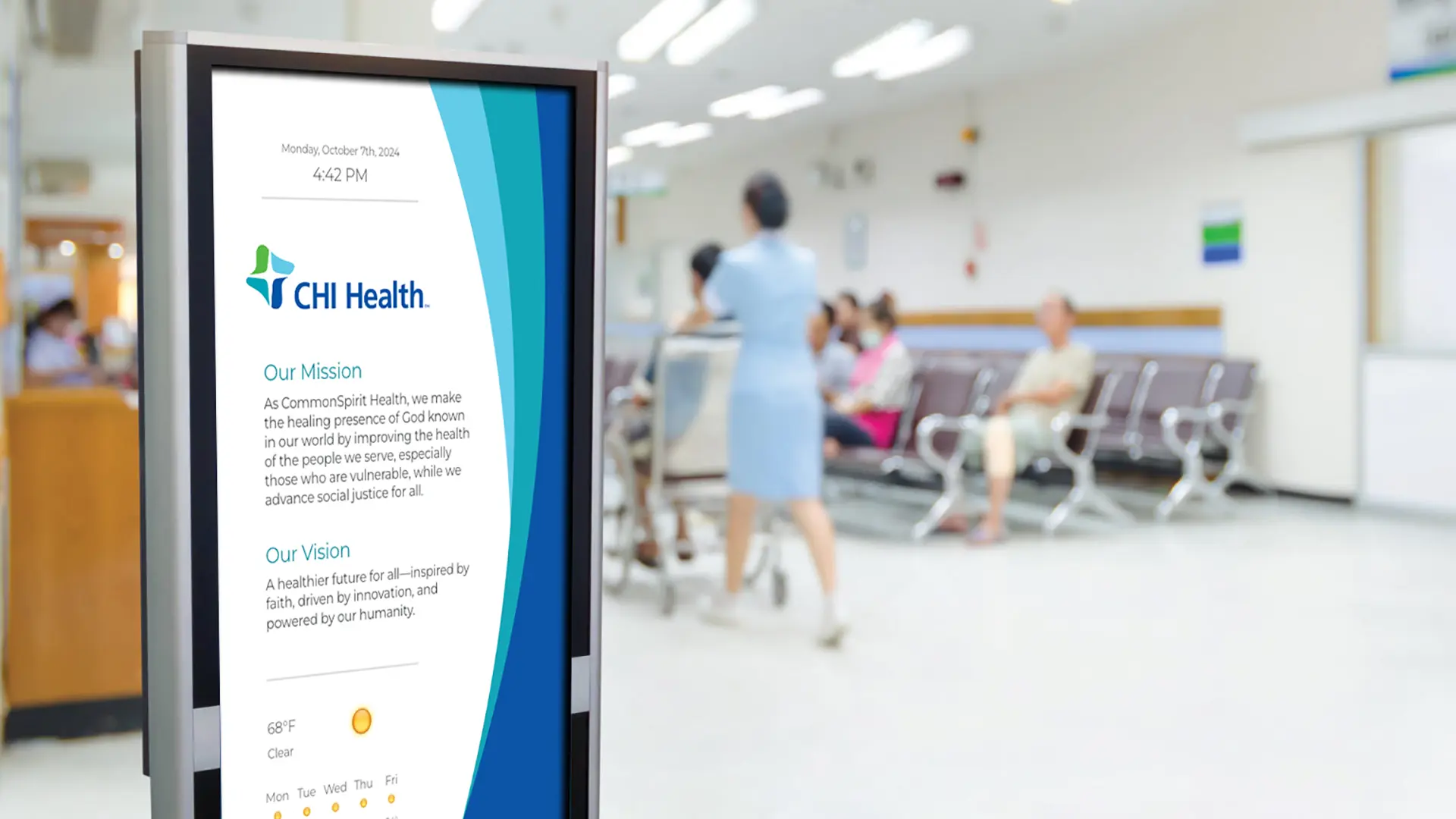
Picture a hospital visit. For many, it’s a time filled with uncertainty and stress. Now, imagine transforming that experience with digital signage for hospitals, creating a guiding, helping hand from the moment someone walks through your doors. With the right tools, you can turn stressful moments into feelings of comfort and confidence, all powered by a clear communication strategy.
Hospital digital signage is more than just screens on a wall; it’s a powerful way to build trust, streamline communications, and create a healing environment for everyone. From the waiting room to the patient room, digital displays can deliver the right message at the right time, enhancing the patient and visitor experience while supporting your dedicated hospital staff.
With nearly 30 years of experience in merging technology with storytelling, Arreya is here to help you unlock these possibilities. Let’s explore ten ways this technology can transform your healthcare facility
1. Calm Anxious Visitors with Digital Wayfinding for Hospitals
Hospitals can be labyrinths of hallways and departments, making navigation a major source of anxiety. Improved wayfinding is one of the most immediate benefits of healthcare digital signage.
Instead of confusing paper maps, imagine vibrant, interactive displays greeting visitors. With digital wayfinding signage, patients can view virtual maps, use a touchscreen to chart their course, or scan QR codes to get directions right on their phones. This simple tool reduces stress, ensures timely arrivals for appointments, and offers visitors a sense of control, making them feel cared for before they even see a doctor.

2. Streamline Check-Ins with Hospital Digital Signage
Long lines and crowded front desk areas can create a tense atmosphere. A key benefit of hospital digital signage is its ability to create a modern, streamlined check-in process. Kiosks and tablets allow patients to check in safely and efficiently, reducing physical contact and a lower risk of spreading germs.
Once checked in, screens in waiting areas can display real time updates on wait times, giving patients and families clear expectations. This not only reduces perceived waiting times but also frees your staff to focus on more critical, hands-on care.
3. Transform Waiting Rooms into Spaces of Comfort
The wait is often the hardest part. Digital signage in waiting rooms can turn idle time into an opportunity to engage and inform. You can create a calming atmosphere by displaying useful and entertaining dynamic content, such as:
- Health and wellness tips
- Heartwarming patient stories and testimonials
- Introductions to your care providers
- Local news, weather, and community information
- Soothing visuals and ambient music
By providing valuable content, you can significantly reduce anxiety and improve the overall patient experience.
4. Strengthen Community with Digital Donor Walls
Hospitals are pillars of the community, often built through the generosity of donors. A key use for healthcare digital signage is to celebrate this support in a modern, beautiful way. Move beyond static plaques and use digital displays to tell compelling donor stories through video, recognize contributions in real time, and share information about fundraising events. It’s a powerful way to show gratitude, inspire new giving, and deepen the connection between your facility and the community it serves.
5. Enhance In-Room Patient Comfort and Care
The patient’s journey doesn’t end at the door to their patient room. Digital screens can make their stay more comfortable and keep them informed. Imagine one of the in-room TV channels transformed into a dedicated hospital information hub, displaying cafeteria menus, visiting hours, or educational content about their condition. For your staff, integrating screens with monitoring devices allows them to view vitals with real-time updates, enhancing staff communications and patient safety.
6. Celebrate Your Healthcare Heroes with Digital Displays
Your hospital workers are your greatest asset. Using digital signage for internal communications is a fantastic way to celebrate their hard work and dedication. Dedicate screens in staff-only areas to share positive patient testimonials, recognize employee milestones, and celebrate team successes. When your team feels valued, it shines through in the quality of their care and improves operational efficiency.
7. Improve Critical Staff Communications with Healthcare Digital Signage
In a healthcare setting, clear and immediate communication can be life-saving. Digital signs are the most reliable way to distribute time-sensitive information. With a cloud-based platform like Arreya, you can instantly:
- Broadcast emergency alerts and messages across the entire facility.
- Update medical charts and patient information for nurses and doctors.
- Share important announcements about policy changes or events.
This level of healthcare digital signage improves staff coordination and ensures your care providers have the information they need to deliver the best possible care.

8. Modernize Your Cafeteria and Visitor Services
A small touch can make a big difference. Use bright, easy-to-read digital displays for your cafeteria menus. With Arreya’s intuitive Creative Studio, your team can make updates in seconds, schedule menus for different mealtimes, and highlight daily specials. This enhances the visitor experience and eliminates the waste and cost of reprinting paper menus.
9. Empower Patients with Accessible Health Information
In a healthcare environment, knowledge is empowering. Use digital signage to deliver valuable health information, from public health statistics to wellness tips for healthy living. By including QR codes on your displays, you can give patients easy access to trusted resources and information that complies with patient privacy standards, such as those outlined by HIPAA. This commitment to transparency helps create a healthier and more informed community.
10. Unify Your Facility with a Single Digital Signage Solution
Bringing all these elements together requires a seamless, reliable platform. Arreya is the only partner that offers a true all-in-one solution: easy-to-use software, custom-fabricated displays, and dedicated live support. From the initial concept to the final installation, we’re here to ensure your digital signage represents your values and meets the unique needs of your facility. Our cloud-based system is infinitely scalable, providing a robust system for hospital digital signage that allows you to manage one screen or hundreds from anywhere, anytime.
Ready to Create a More Connected, Caring Environment?
Digital signage does more than just deliver a message—it builds connections, provides comfort, and enhances care. It shows your patients, visitors, and staff that you value their time, their well-being, and their experience.
With Arreya, transforming your hospital’s communication is simple, and rewarding. We’re with you every step of the way. Let’s create something amazing together.


